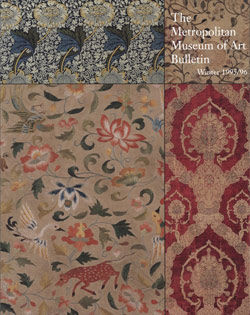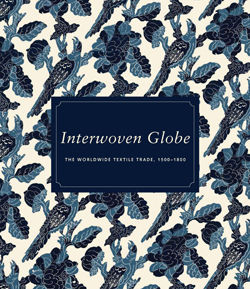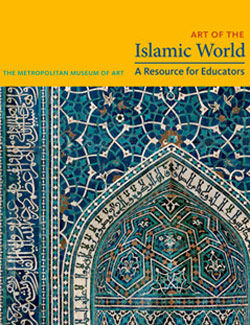Length of velvet
Not on view
Sumptuous velvets, such as this example, were among the most highly prized luxury fabrics of the Renaissance. Utilizing variations on a relatively small number of decorative motifs, most notably the pomegranate, palmette, artichoke, and garland, these silken-pile textiles developed from earlier fifteenth-century subtle voided patterns, formed by the appearance of the ground fabric where there was no pile on the surface, into visually and technically more complex designs. Here, the symmetrical pattern of elaborate artichoke forms within lobed compartments surrounded by ogivally arranged intertwined leaves and flowers is woven with metal thread, and some details are executed with metal loops (bouclé) for additional texture. The jewel-tone silk velvet primarily forms the background, which, in areas, has a subtle "sculpted" leaf pattern achieved by juxtaposing two different heights of the velvet pile.
Woven in Italy—particularly Florence, Venice, and Genoa—and in Spain, velvets were coveted throughout Europe and also in Turkey, where production demonstrated reciprocal influences, especially with Venetian weavings. This particular example exhibits Eastern influence in the crenate collar or clip motif that secures the garlands. Contemporary paintings, inventories, and extant examples clearly indicate the international appeal of velvets and their varied uses: from ecclesiastical vestments to caftans and European-style garments for the very wealthy, to opulent furnishings, cloths of honor, and diplomatic gifts.
Due to rights restrictions, this image cannot be enlarged, viewed at full screen, or downloaded.
This artwork is meant to be viewed from right to left. Scroll left to view more.







